Jul 26, 2023
The Frontier of Harm Reduction: Expanding Services for Rural People Who Use Drugs
Dr. Sarah Spencer is the only addiction medicine specialist serving southern Alaska's Kenai Peninsula — a rural area of over 10,000 square miles. So when new problems emerge related to substance use in local communities, she is one of the first to know.

Soon after becoming board-certified in addiction medicine in 2015, Spencer started hearing concerns from local healthcare providers about a spike in injection drug-related infectious disease — such as hepatitis C virus (HCV) — and bacterial infections. According to patients, sharing and reusing old syringes had become prevalent in their communities. To make matters worse, one area pharmacy had stopped selling syringes to customers without a prescription; another would sell syringes in small quantities, but only after customers provided their name and photo ID.
"Folks in a lot of rural communities literally have no place to buy new injection equipment," said Spencer. "And even if they do, it's a place where they often don't have any anonymity — it would be very risky."
Soon, a group of concerned healthcare providers, social workers, legal advocates, and other community members formed to discuss the possibility of opening a syringe services program (SSP) in Homer, a small coastal community affectionately known to locals as "the end of the road."
The city hospital offered free use of an empty downtown storefront property, in addition to assisting with the disposal of used syringes. Volunteers signed up to work shifts every other Tuesday evening, distributing free sterile syringes and collecting used syringes. Volunteers also educate clients on safe injection practices, provide treatment referrals, and hand out free doses of the overdose-reversal drug naloxone.
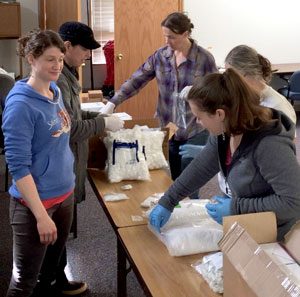
When the Homer Syringe Exchange opened in 2016, it was the first SSP in rural Alaska. But this small, grassroots organization at "the end of the road" is reflective of a gradual nationwide embrace of "harm reduction" — a public health strategy that aims to reduce the health risks and mortality associated with illicit substance use, rather than focusing narrowly on prevention, treatment, and abstinence.
"We have this rigidity in our culture that doesn't accept that drug use is part of reality," said Philomena Kebec, co-founder of Gwayakobimaadiziwin Bad River Harm Reduction, based out of the Bad River Reservation in northwestern Wisconsin. "There are so many young people using drugs on a regular basis. Frankly, I think we need to accept that fact and focus on reducing the risks. Because if we pretend that it's not happening, they'll keep using secretly, and often alone, which puts them at risk for overdose and infectious disease."
Everyone here has lost someone that they love — everyone, everyone, everyone. But there are ways that we can reduce the risks, and we lead with that.
Opioid use, injection-related disease, and overdose deaths have surged in recent decades, making no exception for rural populations. This national epidemic is often compounded in rural and frontier communities by a shortage of treatment availability, increased stigma, and transportation-related challenges. In response, rural organizers across the country are testing innovative — and sometimes controversial — harm reduction strategies to expand potentially life-saving services to some of the most at-risk members of their communities.
"Everyone here has lost someone that they love — everyone, everyone, everyone," said Kebec. "But there are ways that we can reduce the risks, and we lead with that."
From Urban Innovation to Rural Lifeline
Harm reduction is an amorphous term — sometimes used to refer to a set of concrete public health interventions and other times used to refer to a particular moral framework around substance use and addiction, a philosophy of care. The central practice — free distribution of sterile syringes to people at high risk for injection-related infection and disease — was pioneered in the UK in the 80s, in response to the HIV/AIDS epidemic. Today, harm reduction programs often also offer free naloxone, fentanyl test strips, safer-sex supplies, infectious disease screenings, educational resources, and treatment referrals.
As a philosophy, harm reduction emphasizes a non-judgmental, non-punitive approach towards people who use drugs. Harm reductionists do not encourage illicit drug use, but rather emphasize that any effective intervention must begin with a commitment to meeting people "where they're at," according to the National Harm Reduction Coalition. For some, that may mean exploring treatment options, while others may only be interested in learning strategies for safer use.
For a long time, harm reduction programs were located primarily in urban areas — but that has gradually been changing. In 2015, an HIV outbreak in rural Scott County, Indiana, brought national attention to the risk of injection-related disease outbreaks in rural areas. Soon, states such as Indiana, Kentucky, and North Carolina authorized the limited use of SSPs to address these growing concerns. Today, all but six states — South Dakota, Nebraska, Kansas, Alabama, Wyoming, and Mississippi — have legally operating SSPs. Of the 526 SSPs currently listed in the North American Syringe Exchange Network directory, nearly 25% are located in FORHP-defined rural areas.
There is little disagreement as to the effectiveness of SSPs in reducing the incidence and spread of injection-related diseases; however, some critics worry that harm reduction services enable or encourage problematic behaviors and make communities less safe. According to the CDC [page no longer available online], research has found that those who utilize harm reduction services are five times more likely to enter treatment than those who do not; additionally, research has found no evidence that SSPs lead to an increase in local crime or syringes improperly disposed in public places.
Despite this strong research backing, harm reduction programs in rural communities have sometimes encountered policy barriers and community opposition. For example, the program established in Scott County, Indiana, following the HIV outbreak in 2015 was ended in 2021 by a vote of the county commissioners. The commissioners who voted against the program's continuation expressed concern that it encouraged substance abuse.
When Dr. Spencer encounters this line of thinking in her own small town, she tries not to react defensively. "I try to validate that feeling because it's a very logical thought to have," said Spencer. "So I say, 'I can see why you would think that.'"
Before opening the Homer Syringe Exchange, Spencer and other volunteers were concerned about the potential for community pushback. A few members of the group went door to door in the neighborhood of the planned downtown location. They shared information with business owners and asked if they had any questions or concerns. They also organized a community meeting and invited representatives from the school district, local law enforcement, and other community leaders. Perhaps as a result of these outreach and educational efforts, the group encountered "much less concern than we thought there would be."
We wanted everyone to be on board, to understand why we're doing this, that the goal is to make our community a better place.
"We didn't want it to seem like we were doing something under the radar, like a black-market kind of a thing," said Spencer. "We wanted everyone to be on board, to understand why we're doing this, that the goal is to make our community a better place."
Designing Programs to Meet Rural Needs
Around the same time Spencer started hearing about injection-related disease spread on the Kenai Peninsula, Philomena Kebec was hearing similar concerns from litigants at Bad River Tribal Court, where she represented the child welfare program. "My entire caseload was people who were using drugs," said Kebec.
The work exposed her to a troubling pattern. Over and over again, she saw how a drug conviction could lead to a rapid cascade of other events, including child removal, job loss, housing loss, and loss of "the respect that they had within the community."
"Often, within a very short period of time, someone would lose everything that holds them into society," said Kebec. "It just became really hard for me to watch, because we weren't providing them with the support they needed."
These observations — coupled with the information she was hearing from litigants about the prevalence of unsafe injection practices — set her on a search for ways to help. She found a new job and started researching harm reduction programs with a friend and former colleague from the court system, Aurora Conley. In 2015, after receiving approval from the Tribal Council, they founded Gwayakobimaadiziwin Bad River Harm Reduction.
From the outset, Kebec and Conley understood that the unique needs of their rural, tribal service area necessitated an unconventional program design. Their potential clients were geographically dispersed, and many lacked reliable transportation. They also understood that heightened concerns around confidentiality and anonymity could prevent people from reaching out for help.
Initially, they envisioned a mobile outreach model in which they would park at different locations at a set time each week, but found that "people demanded a much more confidential interaction." Eventually, they developed a delivery service that utilizes an internet phone number. Prospective clients can text the number to arrange for a delivery at a time and location that works well for both the client and the program staff member. Supplies are distributed in discreet packaging and clients are not required to share any personal information.
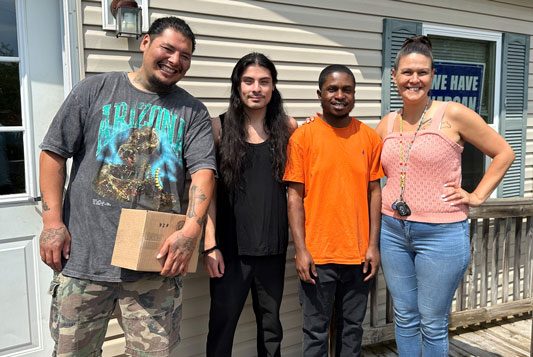
Today, the program has an office space and an on-call staff that monitors incoming texts and arranges deliveries. But in the early days, Kebec and Conley ran the program as volunteers, juggling jobs and busy personal lives.
"We had to create a way of interacting with people that was very safe for them — and for us, too," said Kebec. "We were doing this work in between taking our kids to day care and sporting events and things like that. Oftentimes, I was driving around late at night, meeting people, providing them with supplies and naloxone, and sharing information back and forth, talking to them."
The big question was always, 'Why are you doing this?' My answer was, 'I'm a mom and I don't want people to be sick in our community.'
Prospective clients would sometimes text for hours or days before establishing enough trust to arrange for a delivery. "The big question was always, 'Why are you doing this?'" said Kebec. "My answer was, 'I'm a mom and I don't want people to be sick in our community.'"
Gradually, word about the service spread and deliveries increased. But even in months with few client encounters, secondary distribution — a strategy in which extra harm reduction supplies are given to a client for further distribution in the community — helped to broaden the program's reach.
Dr. Spencer also highlighted secondary distribution as an essential component of the program in Homer. In 2022, the program distributed approximately 10,000 syringes through secondary distribution, in addition to the approximately 30,000 given directly to clients. They provide $10 gas cards to trusted, well-connected clients who assist with distributing supplies in outlying communities.
Mail distribution of harm reduction supplies is another emerging strategy that may prove useful to rural organizers. The Bad River program recently partnered with the nonprofit NEXT Distro to launch a free mail delivery service for Wisconsin residents. NEXT Distro also runs "full-service, harm reduction mailing operations" in a handful of other states.
With multiple distribution models to choose from, and new models — such as harm reduction vending machines and harm reduction cafes — continuing to emerge, what factors should rural organizers prioritize when choosing a program design? In Expanding the Circle of Care: A Practical Guide to Syringe Services for Tribal and Rural Communities, Kebec and her co-authors offer this reflection on developing the Bad River program: "The most important conversations we had (and continue to have) are with people who use drugs."
"Work Where You Can"
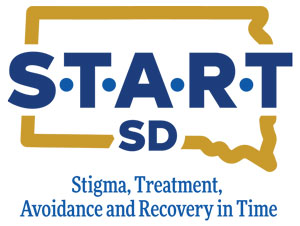 In states such as South
Dakota — where syringe services programs are prohibited
and naloxone distribution is restricted — harm reduction
advocates are still finding ways to develop meaningful
programs. "The key is to work where you can," said Erin
Miller, Assistant Professor at the South Dakota State
University College of Pharmacy and Allied Health. "For
example, we know that needle exchange is not something
that anybody here is even remotely interested in hearing
about, so that's not where we start."
In states such as South
Dakota — where syringe services programs are prohibited
and naloxone distribution is restricted — harm reduction
advocates are still finding ways to develop meaningful
programs. "The key is to work where you can," said Erin
Miller, Assistant Professor at the South Dakota State
University College of Pharmacy and Allied Health. "For
example, we know that needle exchange is not something
that anybody here is even remotely interested in hearing
about, so that's not where we start."
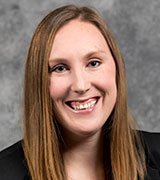
Miller is co-Program Director of START-SD (Stigma, Treatment, Avoidance, and Recovery in Time — South Dakota), a program funded by the federal Rural Communities Opioid Response Program. The program has worked with rural pharmacists and clinicians to provide educational "bootcamps" on medication-assisted treatment, encourage increased screenings for HIV and HCV, and advocate for expanded access to fentanyl test strips. The program also works with treatment and recovery programs to help develop and fund Contingency Management, which utilizes incentives and positive reinforcement to treat substance use disorders.
In South Dakota, pharmacists may currently dispense naloxone through a statewide standing order. However, Miller and others found that there was some confusion about how to properly bill for the drug. The START-SD team worked with pharmacists to address these questions, removing a potential barrier to distribution. Additionally, START-SD has been working with the South Dakota Board of Pharmacy to explore the possibility of distributing free naloxone at community events — a project made less legally complicated by the FDA approval of over-the-counter naloxone nasal spray in March.
…we know that needle exchange is not something that anybody here is even remotely interested in hearing about, so that's not where we start.
Anti-stigma campaigns and trainings are a final pillar of START-SD's efforts. "What we're seeing is that if we can shift people to understanding the science of substance use disorder as a disease, a lot of other beliefs follow from that," said Miller. A recent study conducted in rural South Carolina supports her observation. Researchers found that, among rural survey respondents, acceptance of the disease-model of substance use disorder was highly correlated with support for harm reduction and recovery services in their communities.
A growing number of resources are available to individuals and organizations working to expand harm reduction services in areas with legal restrictions. The Harm Reduction Legal Project offers consultation and free online resources to assist with navigating "the often extremely confusing maze of existing laws and regulations that hamper harm reduction initiatives." Additionally, the CDC's National Harm Reduction Technical Assistance Center provides free support to harm reduction organizers across the country, including assistance navigating legal barriers.
"Don't Be Shy"
It's not all barriers and bad news for rural harm reductionists. Despite significant challenges, rural organizers may also enjoy certain advantages as a result of their locale. For example, both Kebec and Spencer noted that the smaller client base allowed them to launch programs with limited funding and just a few dedicated volunteers.
"When you're starting a program in a rural area, you're going to have a much slower ramp-up," said Kebec. "We started putting our phone number out in the fall of 2015, and we were getting one or two hits a month for the first six months — then it kind of popcorned."
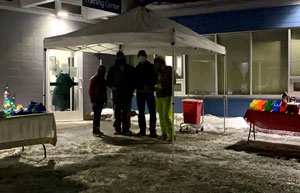
Spencer observed that the social dynamics of rural life made it easy to identify potential collaborators. "Especially people who work in social service organizations, we all know each other because it's such a small town," said Spencer. "It's easy to reach out and quickly develop networks of interesting people — and if you want to get together and work together on something, it's actually pretty easy to do."
As the Homer Syringe Exchange enters its 7th year of operation, Spencer expressed that the work has been "its own reward." According to Spencer, the program receives reports each year of between 10 and 20 overdoses reversed by the naloxone they distribute. Additionally, between 10 and 15 clients seek treatment each year as a result of referrals from their program.
"People are so grateful that you're there to help them, that you're providing a safe atmosphere where they can just be themselves, ask the questions that they need to ask, and get their needs addressed without any judgment or shame," said Spencer.
Since 2021, Kebec has been working as the Economic Development Coordinator for the Bad River Tribe. She continues to oversee the Tribe's harm reduction efforts as part of her current role and has come to view the program through a new economic development lens: in addition to lowering overdose mortality and reducing disease spread, the program also provides job opportunities for people in recovery.
It's a very nice strategy for helping people engage in the legitimate economy again, doing something that is strength-based.
"We have a lot of community members who don't necessarily fit within a traditional employee mold, but they do really good in harm reduction spaces," said Kebec. "It's a very nice strategy for helping people engage in the legitimate economy again, doing something that is strength-based."
Asked if she had any advice for rural harm reductionists starting new programs elsewhere in the nation, Kebec replied, "Don't be shy about it. And if people come back and try to naysay or detract from your mission, listen strongly, just be really strong. Because this is what our country needs right now."
